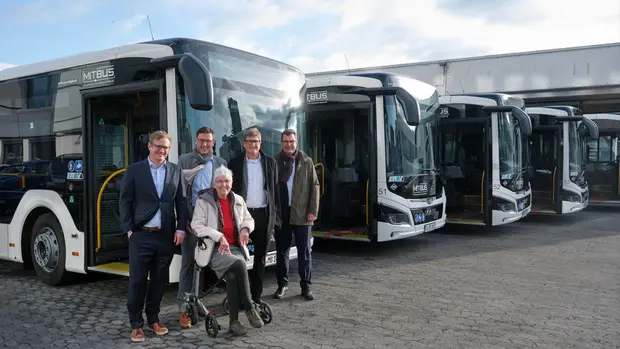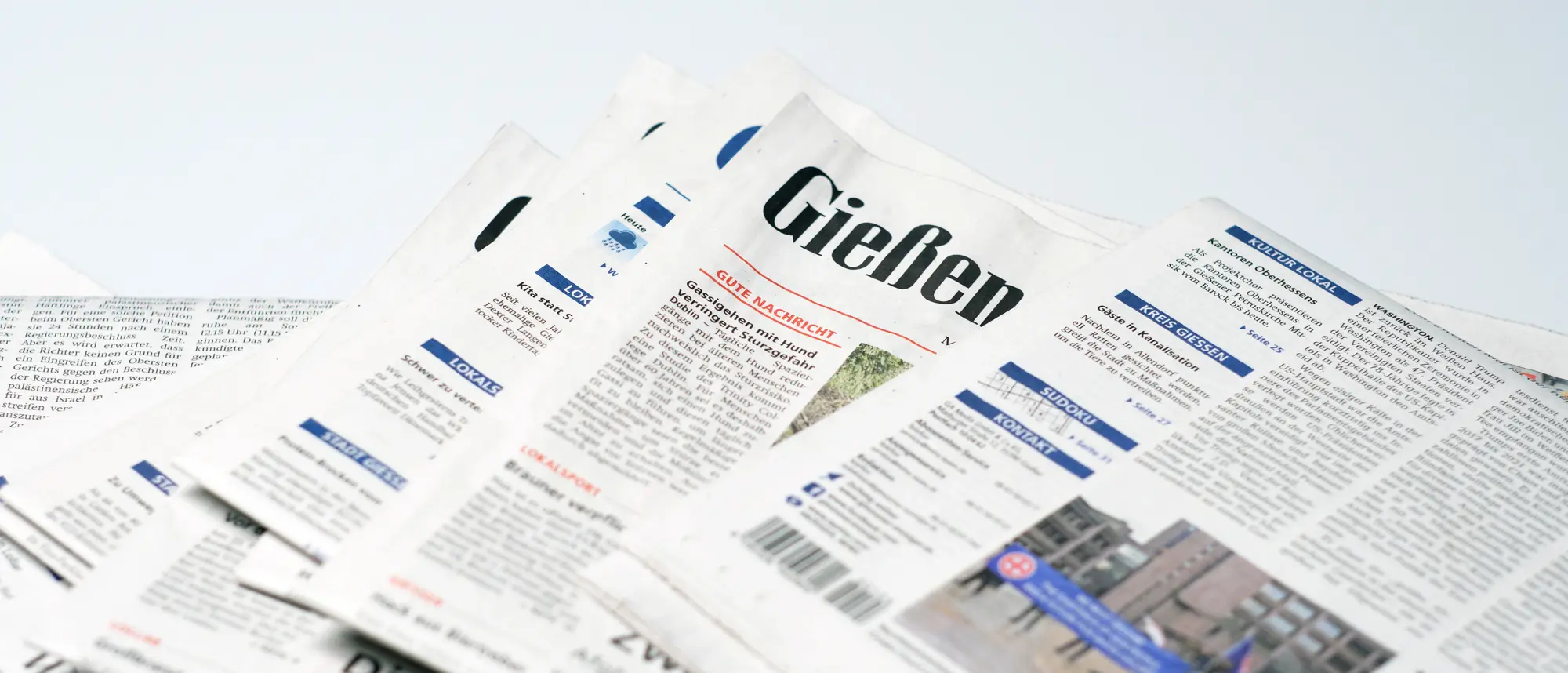
MIT.BUS has acquired five of the latest generation of articulated natural gas buses. The municipal utility subsidiary is thus rejuvenating its fleet and continuing to reduce its overall emissions.
Next week, five new MAN Lion's City 18 C buses will be rolling through the streets of Giessen. With their purchase, MIT.BUS, a subsidiary of Stadtwerke Gießen (SWG), is systematically continuing the modernisation of its fleet. The ultra-modern vehicles are replacing the oldest articulated trams in the fleet. Because they - like the entire fleet - use biomethane as fuel, the new buses are virtuallyCO2-neutral when travelling. In addition to this important feature, their efficient hybrid technology is also impressive. An automatic start-stop system switches off the engine at bus stops and red lights, thereby noticeably reducing fuel consumption. The additional electrical energy required for the numerous starting processes is generated by the vehicle itself - with the help of a special generator and during every braking manoeuvre. "We already have eleven identical buses in operation and are extremely satisfied," emphasised Mathias Carl, Managing Director of MIT.BUS, at the presentation, which was also attended by city councillor Gerda Weigel-Greilich and Mayor and SWG Supervisory Board Chairman Alexander Wright in Lahnstraße.
Fuel-efficient natural gas buses set standards
MIT.BUS has been relying on the MAN Lion's City 18 C since the end of 2020. The articulated trains have fully met expectations in terms of reliability and fuel efficiency. One decisive advantage of these modern vehicles is downsizing: a significantly smaller engine with a displacement of just 9.5 litres provides the necessary power. In the comparable predecessor models, twelve litres of displacement were standard. In addition, they no longer have two alternators on board, but just one. "All of this makes the buses considerably lighter and significantly more economical," says Matthias Funk, Chief Technical Officer at SWG, describing the benefits. Extrapolated to the approximately 50,000 kilometres that a MIT.BUS vehicle covers in a year, the efficient new acquisitions achieve an annual saving of around 8,300 kilograms of fuel - with five buses, consumption is reduced by a total of 41,500 kilograms of biomethane per year. Transferred to diesel, the saving would be around 54,000 litres. "This significantly reduced fuel requirement means lower operating costs and lower pollutant emissions at the same time," adds Jens Schmidt, Commercial Director of SWG.
Comfort and safety
In addition to the environmental aspect, the comfort and safety of passengers and other road users always play a decisive role when deciding on a model. The five new buses fully fulfil these requirements. They offer plenty of handrails, integrated video surveillance and a turning assistant that uses a camera to monitor areas that are difficult for the driver to see. Raised side windows allow plenty of daylight into the passenger compartment, LED lighting provides a pleasant ambience when it gets dark outside and low-mounted grab handles make it easier to get on and off. Naturally, the vehicles also have two wheelchair spaces. "All these features ensure that local public transport in Giessen is becoming increasingly attractive," says Gerda Weigel-Greilich happily.
Millions invested
MIT.BUS is investing around 2.5 million euros in the modernisation of the fleet, thus setting another example in terms of climate protection, efficiency and functionality. "The old vehicles have reached the end of their service life with us after around twelve years of hard use," explains Mathias Carl and Alexander Wright adds: "With the current modernisation, those responsible at MIT.BUS and SWG are once again confirming how seriously they take the issues of sustainability and climate protection." This can also be seen from the fact that the vehicle fleet consists entirely of "clean vehicles" in accordance with the law on the procurement of clean road vehicles.

